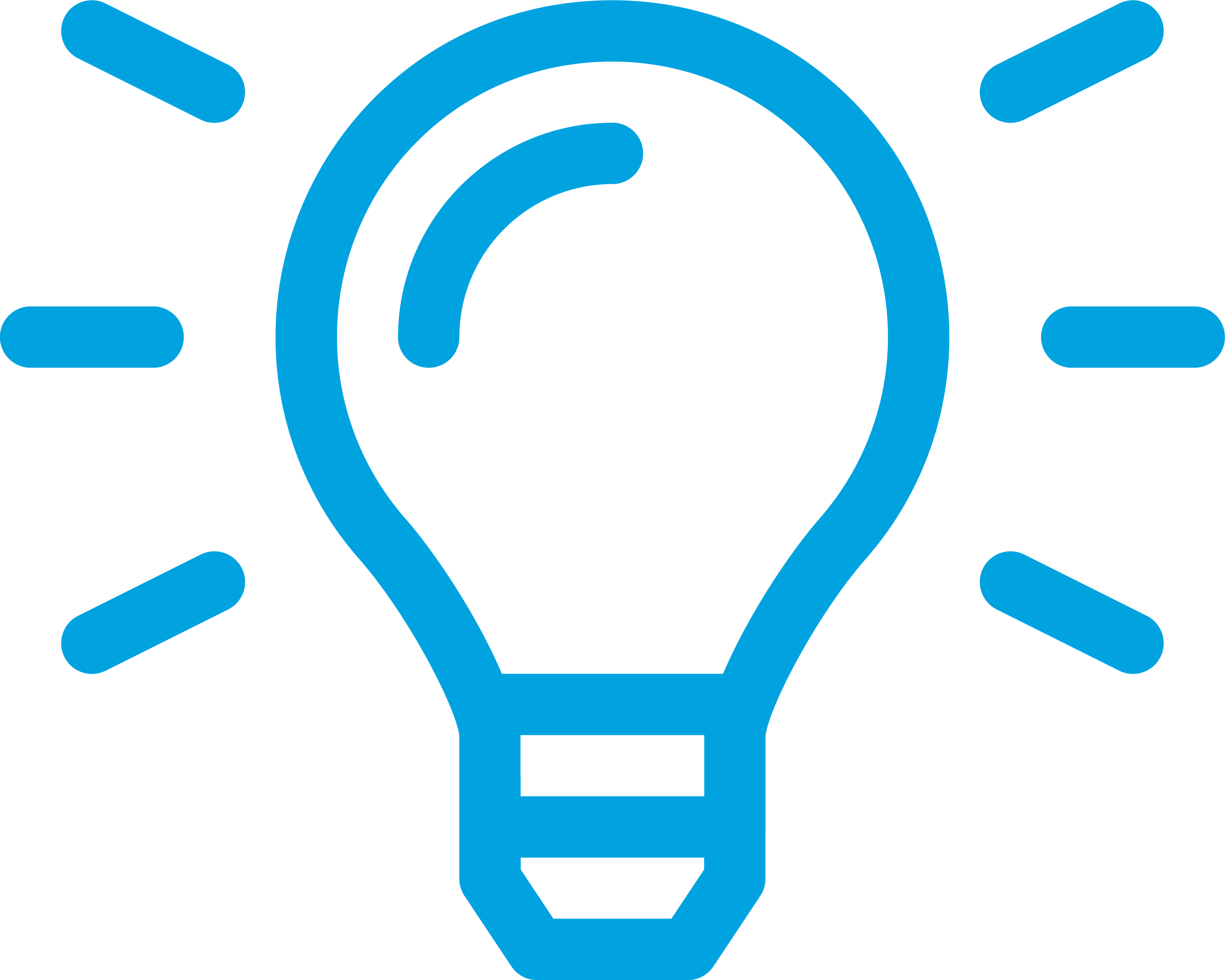The Event Marketing Strategy That Improved Your Trade Show ROI
Over the last three weeks we’ve discussed the elements involved in a high conversion event marketing strategy; attracting more qualified leads to...
6 min read
Lindsay Sykes November 25, 2016

Now that you’ve empowered yourself with the knowledge and tools you need to achieve high conversion event marketing, it’s time to put your skills into practice. After your next event, feel the reward of your hard work by using metrics to measure the success of each element involved in our crash course.
Read the full series.
Today, we’re providing you with the metrics you need to see the results of your redesigned attractors, identifiers, enticers and sell paths.
Since you’ve attracted quality leads to your events with a focused and engaging attractor, to measure the success of your attractor over time we recommend using the following metrics:
Were the right people at your event space?
QLR = Number of Qualified Leads / Number of Visitors
Low results on this metric? Revisit the tips from our Three Ways to Attract Quality Event or Trade Show Leads blog.
How well did you do at attracting people in general?
VR = Number of Visitors / Number of Attendees at the Overall Event
Less than thrilling results on this metric indicates you could use some appeal at your event booth, which we covered in Three Ideas for Using Experiential Marketing to Increasing Event Traffic.
If you’re seeing a difference in your event attendance, then you’ve successfully followed the steps to designing a successful event attractor.
Remember that building brand awareness requires additional experiential marketing tactics than those we’ve outlined in this guide – these metrics are used to measure the success of collecting qualified leads/visitor traffic.
High conversion event marketing is designed to help you convert hot leads, so it is important to never lose sight of focusing and targeting your attractor at your target market even while you are finding ways to make your events more engaging and appealing to attendees.
Part two of our crash course has provided you with tips and best practices for creating dynamic lead capture surveys, as well as using data collection tools to create a lead capture system that creates a user-friendly experience, collects cleaner data and enhances your ability to convert trade show or event attendees to leads.
What’s next? Measure your success. After your next event, use the following metrics to calculate how many visitors you converted to leads, survey completion rate and email bounce rate.
How many of your event space visitors became leads through a conversion point? A higher rate indicates you deployed your identifiers successfully.
VLR = Number of Leads Collected / Number of Visitors
Do visitors start your lead capture surveys and stop mid-way through? Use a lead capture technology that supports tracking when a survey is started, but not completed. This provides you with valuable information as it gives you insight into whether or not your survey needs to be revised.
A 100% completion rate is your ideal goal – numbers lower than this may indicate a survey is too long, too difficult to fill out or that attendees felt that the reward of completing the survey wasn’t worth their time and effort.
SCR = Number of Forms Completed / Number of Forms Started
When you send follow-up emails after your event, do some of them bounce back? Measuring your bounce rate indicates whether people felt compelled to offer a real email address and how easy your information capture set-up was.
BR = Number of Post-Show Email Bounces / Number of Post-Show Emails Sent
If you calculated a high visitor to lead rate, a high survey completion rate, and a low bounce rate, then you are successfully using your identifiers to optimize lead conversion.
If your results did not meet your expectations, rethink what elements of your identifiers you can improve on. Would a sales-facilitated conversion point work better than a self-serve conversion point? Should you be using a mixture of direct and indirect insights? Were you surveys too long or were your qualifying questions too broad? These are all important things to factor into your lead capture system as they enhance the appeal of participating and make the experience more user-friendly for attendees.
Your event is over and you’re feeling like it was a success. Qualified leads filled your event space and attendees seemed to be responding to all of the engaging content you offered.
As discussed in our crash course, enticers are the third part of our guide to mastering event ROI. Enticers are all about nurturing and informing leads in order to move them through the sales funnel. These persuasive event elements are supposed to make the qualified leads that you attracted to your event fall in love with your product. This means your goal is to leave your event having collected a high rate of warm and hot leads.
Use the following metrics to calculate hot/warm lead rate as well as how your post-show nurturing is going.
Two key indicators of your enticers’ success are the number of warm and hot leads at your event in comparison to overall leads.
HWLR = Number of Warm Leads / Number of Leads
If you calculated a low warm lead rate, you’ll want to work on your top and middle of the funnel enticers. This includes improving your broad messaging and educational content like videos, guides and product-relates games, in order to better engage, entertain and inform attendees.
If your hot lead rate is low, this means revamping your bottom of the funnel enticers such as product feature and pricing sheets, case studies, and brochures. These enticers are designed to provide qualified buyers with purchase information in order to persuade them to make a purchase decision. By improving these types of enticers, you will have hot leads one step closer to buying your service/product.
As discussed in section two, using a mixture of direct and indirect insights allows you to see both immediate results regarding attendee buyer readiness as well as a look into consumer behavior after your event. Depending on what types of identifiers and enticers you use at your event, you may be able to track additional enticer metrics than just hot/warm lead rate. This includes:
Using these metrics will greatly improve your ability to measure the success of your enticers event-to-event and make it easier to adapt your enticers accordingly.
In order to nurture your attendees to move them through the sales funnel, it is also important to follow-up through emails with event attendees after the show. By doing so, you can track the following:
Achieving high conversion event marketing requires you to utilize every chance you can to engage your attendees. Identifying what kind of enticers leads require to move through the sales funnel, and providing this educational content in various forms will maximize the amount of overall leads, as well as warm and hot leads that you collect at your event. This content should help nurture leads and provide them with the information they need to fall in love with your product or service and eventually become a customer.
Clear, simple, efficient, painless – that’s the kind of sell path you’ve designed and used at your event.
In part four of our event marketing crash course, we shared our tips for creating a deal closing sell path and the benefits of using one. You mastered how to make the buying process feel effortless for customers, which in turn enhanced attendee experience and the value of your product/brand. Now that you’re a pro at using your sell path to convert more trade show and event leads to sales, it’s time to measure your success.
Calculate your rate for converting hot and qualified leads to sales, as well as the average time-to-close/purchase.
Since you designed an event attractor that got the right people attending your event, used identifiers to capture and segment leads, and then used enticers to nurture attendees to move them through the sales funnel, you should have a higher rate of qualified and hot leads at your event. Measuring your hot & qualified lead conversion rate will indicate how effective your sell path was at getting these kinds of leads to take the finals steps to purchase.
HQ = Number of Sales / Number of Hot & Qualified Leads
If your HQ conversion rate is low, consider how you can revise your sales process. At what point are you losing leads and why? Understanding this information will help you see what aspect of your sell path is turning people away and adapt it accordingly.
We’ve discussed the importance of using a sell path that requires as little steps/work as possible for customers. The longer the time-to-purchase, the more likely your buyers will lose interest in your product and consider your competitors. Creating a clear sell path that requires minimal next steps for customers will decrease your average time-to-close.
TCP = SUM (Days to Close Sale per sale) / Number of Sales
If your average time-to-close is higher than desired, revisit our last post on tips for creating a deal closing sell path. Ask yourself if there are any ways you can streamline the buying process that you didn’t try, or that you can improve on.
Don’t let event staff get frazzled when attendees want to purchase on site. Have clear, outlined steps in place that staff can easily explain to customers to make the buying process seem easy and appealing. While designing a sell path is often forgotten by marketers, the proof is in the numbers: creating a clear sell path converts more leads to sales. Give yourself the one up from your competitors and have your customers walk away feeling satisfied with their purchase experience, excited about your product and valuing your brand.

Over the last three weeks we’ve discussed the elements involved in a high conversion event marketing strategy; attracting more qualified leads to...

In part one of our high conversion event marketing crash course, we discussed how to attract more of the right people (aka qualified leads) to your...

In our last blog, we talked about how you can convert more leads to customers at your events by designing effective sell paths. Sell paths are the...